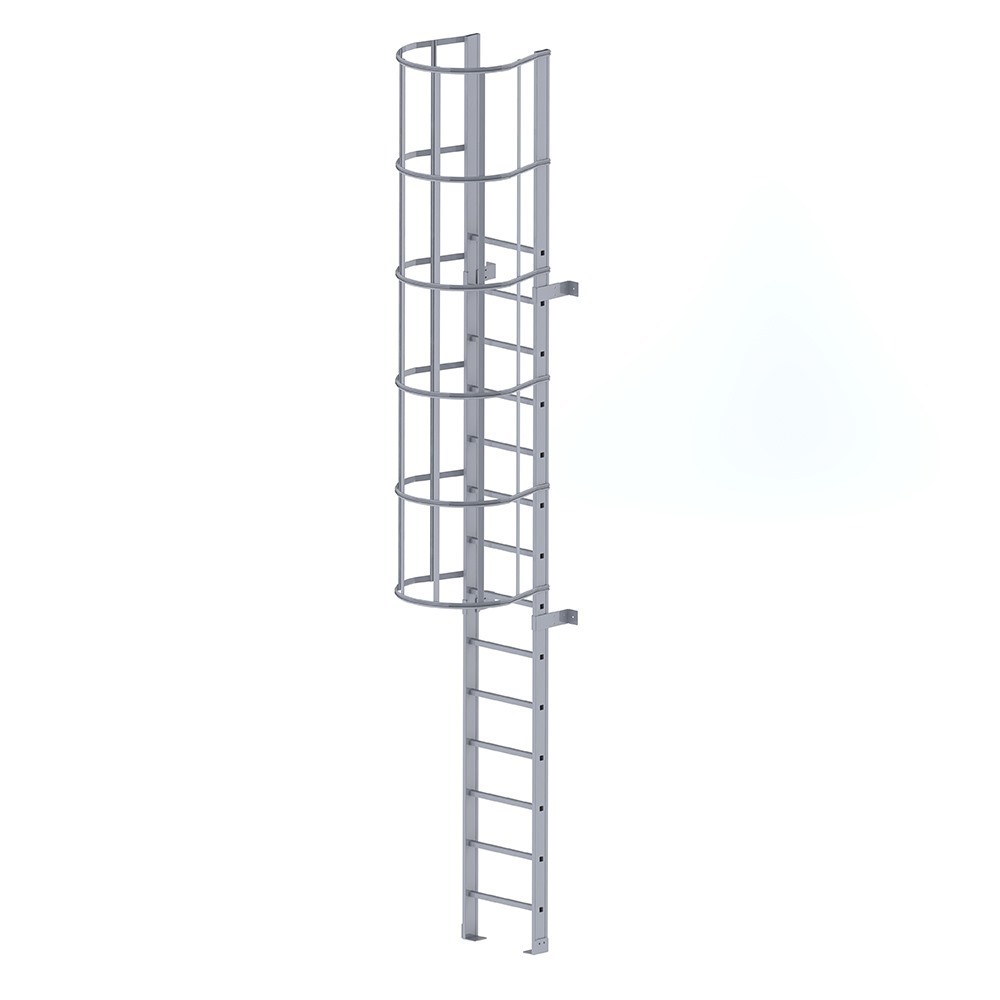Ladders are permanently mounted to buildings so their montage place should be determined already during design process. It is crucial in calculating precise load elements have to endure. Ladder montage is important, because it allows authorized people safe access to roofs. In most cases they are used for free and safe entrance for maintenance and service. Can serve as an evacuation element in dangerous situations allowing for safe exit. After montage, ladder becomes integral part of the building so it is important to calculate and predict its acceptable load. Another crucial thing is checking if installed ladder have no negative effect on facade or does nor lower energetic balance of the building.
In theory ladder montage can happen at any point in building construction process, even right before its commission. To avoid any undesirable problems it is best to plan for ladders already in design stage so providers can prepare optimized installation. Montage process is quite similar for constructed and already completed buildings alike. We must remember that on commissioned building unforeseen problems can arise.

Basic ladder montage should be chosen by authorized people. It is done by trained professionals during early finishing works. When construction and load-bearing layers are properly prepared installers can mount anchor handles. They must be chosen with utmost care because they are responsible for stability of whole structure and hence users safety. Anchor handles must be chosen individually because each wall and its surrounding may vary drastically. Handles will be responsible for proper holding so they have to manage ladders weight and load during usage.
There are many material solutions from which anchor handles are made of. Most popular are steel handles. Used during montage on concrete and brick walls, but also on steel constructions and reinforced concrete columns. Steel handles can be fixed or regulated, with support or not. Another kind are chemical handles that can be used in demanding situations. They are perfect for old brick buildings as we avoid breaching stability by drilling to many holes.
Equally important aspect while choosing right anchor handles is their length. Mostly depending on wall’s thickness (all layers, even isolation included) together with facade. We need to remember to add 15cm as it is minimal distance between ladder and wall. That is why regulated handles are recommended so we have certainty ladder will be installed according to the rules.
When type and length of anchor handles are properly chosen we can mount them to the wall. Holes with right interspace must be drilled, depending on type and size od the handles. We take into consideration length of the ladder as it determines its load, which is very important in choosing montage method. Special anchor handles with support plates must be used in case of heavy load or bigger than recommended interspace between holes are required. With them we can be sure ladders are 100% safe and functional.
After properly installing anchor handles and checking their montage we can continue to mounting ladders. Before this stage warming must be done an the walls with anchor handles. Sometimes laying facade or plaster comes before. When all previous stages are complete installers can do their job. Ladder montage starts form top to bottom. It is relevant because the highest rung should face surface of the roof. If there is attic on the roof, first step is done there. Safe passage over it is installed. Next is descent on roof’s side. All elements are mounted that is rungs, protective bows and safety basket. Last stage is montage of additional accessories individually picked for customer needs. This includes platform and guardrails to increase safety.
When all above stages are complete we check all fastenings. Person responsible for montage approves and confirms ladders’ safety when everything checks out. Ladders prepared this way await only buildings commission.
SZUKASZ PRODUKTU LUB ROZWIĄZANIA?